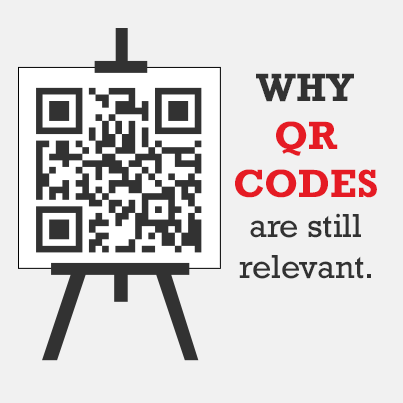
QR codes are still relevant, and will be for some time. Here’s why!
There has been quite a bit of buzz lately, about the imminent demise of QR codes in marketing. In particular, a thoughtful and well-written piece in AdAge by B.L. Ochman caught my attention. The argument she makes is both simple and impossible to deny in the long run– that QR codes are being replaced by new technologies that offer a significantly faster, more intuitive, and attractive experience.
Technologies like Blippar, a mobile app that allows users to extract special offers, 3D augmented reality experiences, product information, and more from markers in print sources, offer supposedly seamless interaction free of clicks and hassles. Many other technologies like this exist; as one would expect, and for this reason many marketers and advertisers are predicting the end for QR codes.
I am reminded of that famous Keynes quotes: “the long run is a misleading guide to current affairs. In the long run we are dead.” QR codes, like the rest of us, will die eventually. No argument here. The issue is that seeing the future with any real precision is quite difficult.
The various emergent QR-replacement technologies, while ‘cool’, are hardly suitable for the vast majority of campaigns at the moment. QR codes remain one of the easiest technologies to scale, and an increasing number of consumers are comfortable using it.
The fact that QR codes use an open source technology is another point to consider. 100,000 companies can use QR codes in their campaigns, and consumers still only need one QR scanner to interact with them all.
With so many different alternatives popping up, the landscape of the ‘augmented advertising experience’ is going to be increasingly complicated for consumers. I would wager that this complexity will sustain QR codes, as people are actually starting to feel comfortable with them and know what they are.
Augmented reality, on the other hand, usually requires the installation of a different native app for each brand. If I regularly visit 25 different stores, that’s an additional 25 apps I have to manage on top of everything else. Hardly increased convenience. The same is true for apps like Blippar. If there are ten such apps in use by major brands at any given time, am I really going to get all ten? Even three? Probably not.
Eventually one will win out, but at that point it is likely that the latest ultra-hip marketing tool we can’t even imagine will have eclipsed the technologies now. The real lesson here is every tool has its place in the toolbox, and should not be relegated to history because something cooler seems like it might be on the horizon. As technology progresses faster and faster, choosing the correct tool rather than the trendy one will be increasingly important.

